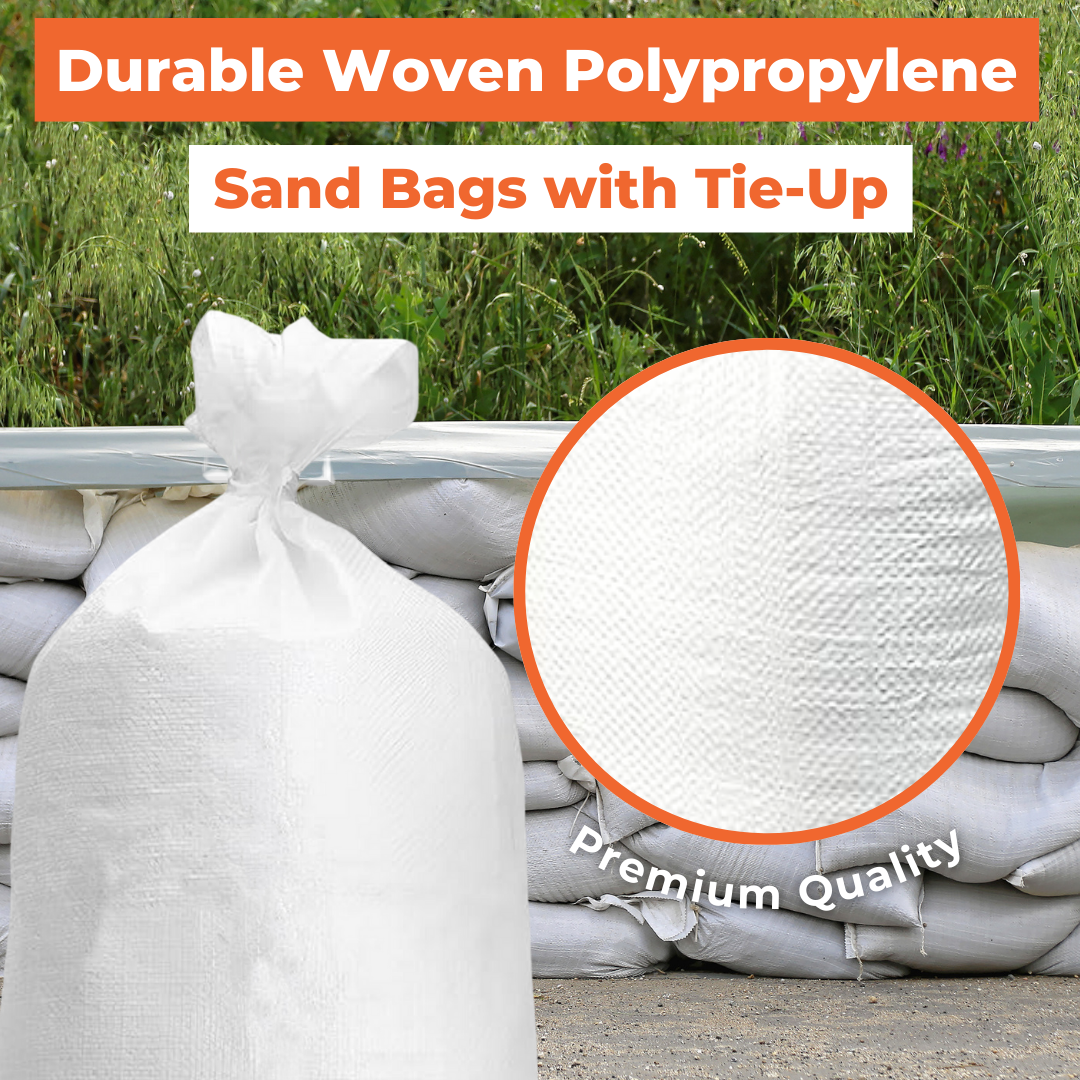The Complete Guide to Sandbags for Flood Protection in Australia

Why Woven Polypropylene Sandbags Are Essential for Flood Protection in Australia
As Australia faces increasingly unpredictable weather events, households, councils, and businesses are turning to a reliable, time-tested solution for flood protection — woven polypropylene sandbags. Whether it’s blocking rising waters, diverting flow, or protecting valuable infrastructure, sandbags continue to play a critical role in emergency preparedness.
The Importance of Sandbags in Flood Control
When floods strike, response time is everything. Sandbags can be quickly filled with sand or soil and stacked to create barriers that block or redirect water. For residential homes, they can be placed around doorways, garages, and low-lying areas to reduce water ingress. On a larger scale, councils and SES crews deploy them in bulk to safeguard entire streets, levees, or drainage systems.
Why Choose Woven Polypropylene Sandbags?
- Durability: Made from high-strength woven polypropylene with reinforced stitching.
- UV Protection: Treated for up to 1600 hours of outdoor exposure, ensuring they won’t degrade prematurely under the sun.
- Ease of Use: Open-mouth design with tie strings for fast filling and secure closure.
- Environmentally Responsible: Manufactured from Class 5 recyclable polypropylene, which can be repurposed into ropes, textiles, or other products.
- Cost-Effective: Affordable bulk packs make them accessible for councils, contractors, and households alike.
Common Applications Beyond Flood Protection
While sandbags are best known for flood control, they are also invaluable across industries:
- Construction: Weighing down road signs, stabilising pipes during laying, and creating temporary barriers.
- Landscaping: Managing erosion on slopes, riverbanks, and levees.
- Event Management: Securing outdoor signage and temporary fencing.
How to Properly Use Sandbags During Flood Events
For maximum effectiveness, sandbags must be filled and stacked correctly:
- Fill correctly: Only fill each bag two-thirds full with sand or soil. This allows the bag to mould into place when stacked.
- Stack strategically: Place bags in a brickwork pattern to avoid gaps, with the tied end tucked underneath.
- Seal openings: Ensure no gaps between bags where water can seep through.
- Dispose or recycle responsibly: After use, check local recycling options for polypropylene disposal.
FAQs About Sandbags
Do sandbags come filled?
No, they are supplied empty and must be filled with sand or soil locally.
How many sandbags do I need?
As a rule of thumb, a one-metre-long wall at one metre high requires 10–12 sandbags.
Can sandbags be reused?
They are designed for single flood events but may be repurposed if undamaged.
Order Sandbags Online from Pacific Packaging Australia
Be prepared before the next flood season. Pacific Packaging Australia supplies woven polypropylene sandbags Australia-wide, trusted by councils, emergency services, and homeowners alike. With UV protection, heavy-duty stitching, and recyclable materials, our sandbags are built for reliability when you need them most.
